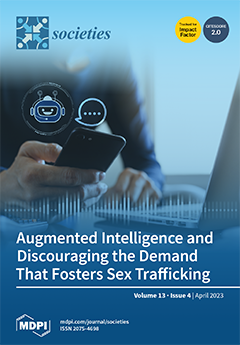Open AccessArticle
Composing Worlds: A Portuguese Transdisciplinary Network in Humanities, Health and Well-Being
by
Marina Prieto Afonso Lencastre, Rodrigo Sá-Nogueira Saraiva, José Calheiros, Diogo Guedes Vidal, Eduardo Paz Barroso, Álvaro Campelo, Pedro Cunha, Ricardo Jorge Pinto, Susana Magalhães, Teresa Toldy and Rui Estrada
Viewed by 1161
Abstract
The project “Composing worlds: humanities, health and well-being in the 21st century” aims to build a network of experts in the humanities, social and health sciences, who think about health and well-being in contemporary technological societies. The relevance of this project is based
[...] Read more.
The project “Composing worlds: humanities, health and well-being in the 21st century” aims to build a network of experts in the humanities, social and health sciences, who think about health and well-being in contemporary technological societies. The relevance of this project is based on the growing evidence that most of the problems that the 21st century will face, particularly in the area of health and well-being, relate to the way in which humans connect to the environment, to non-human beings, to different cultures and to technologies. Its main goal is to bring out personal and well-founded ideas on these issues and to reflect on how the humanities may help with difficult environmental, social and technological issues. The methodology used in the first phase of the project consists of an open answer interview, built in a participatory way by the network of experts, and of a thematic analysis of the answers. It is an exploratory research project, which uses thematic analysis to identify the key ideas of each author, and to induce the corresponding main themes. The themes are then organized by semantic correspondence into thematic clusters. The thematic axes are abstracted from these clusters, and they constitute the vectors to be developed in the second phase of the project, by proposing their integration into university curricula, research and intervention of social, cultural and community outreach. Some of these developments are already in place.
Full article





